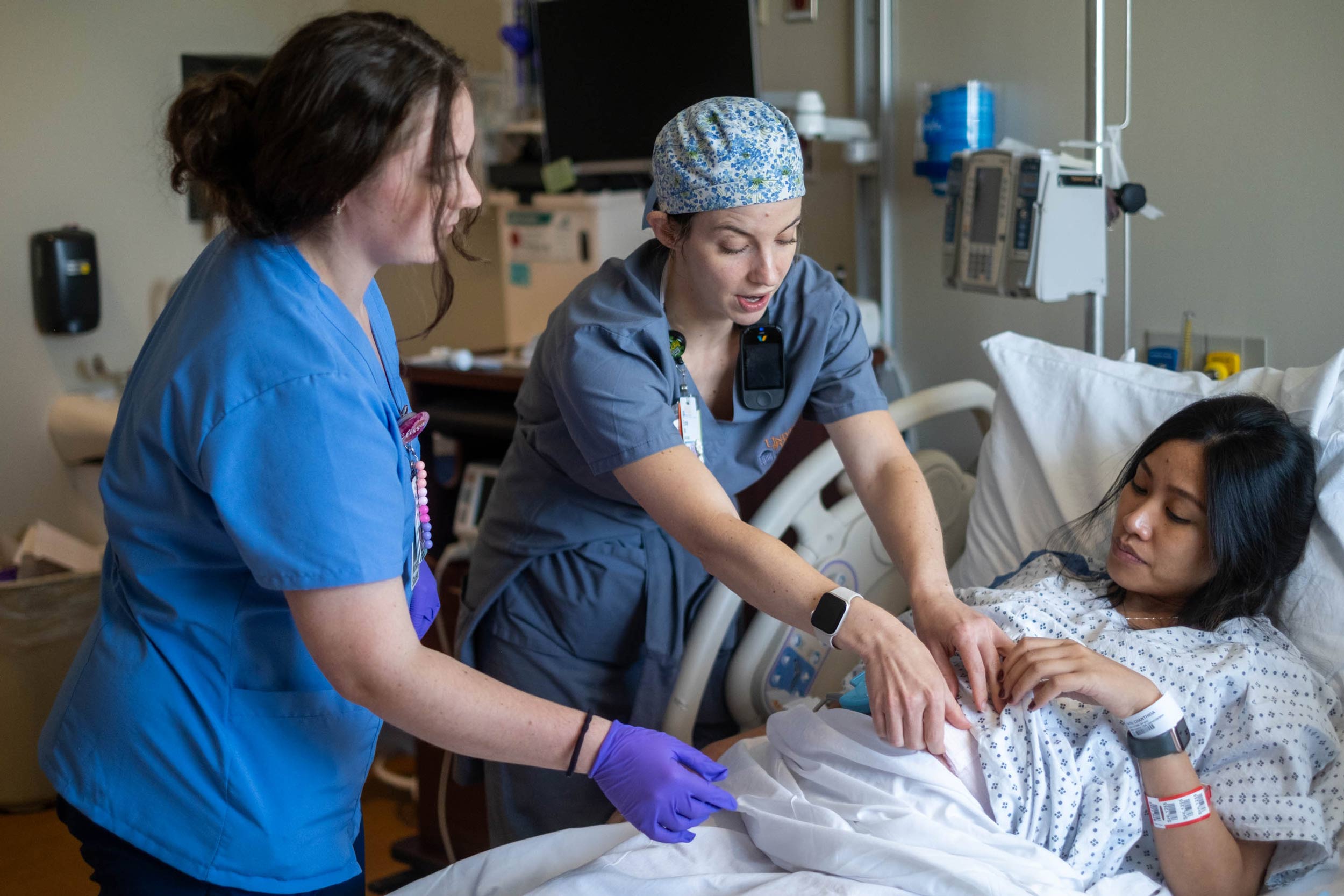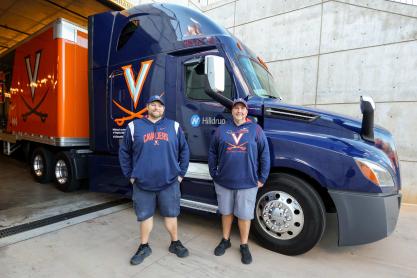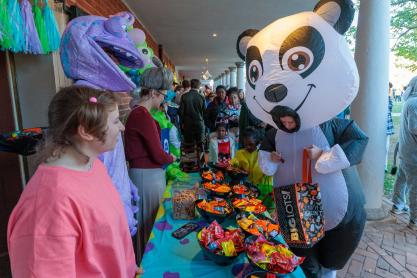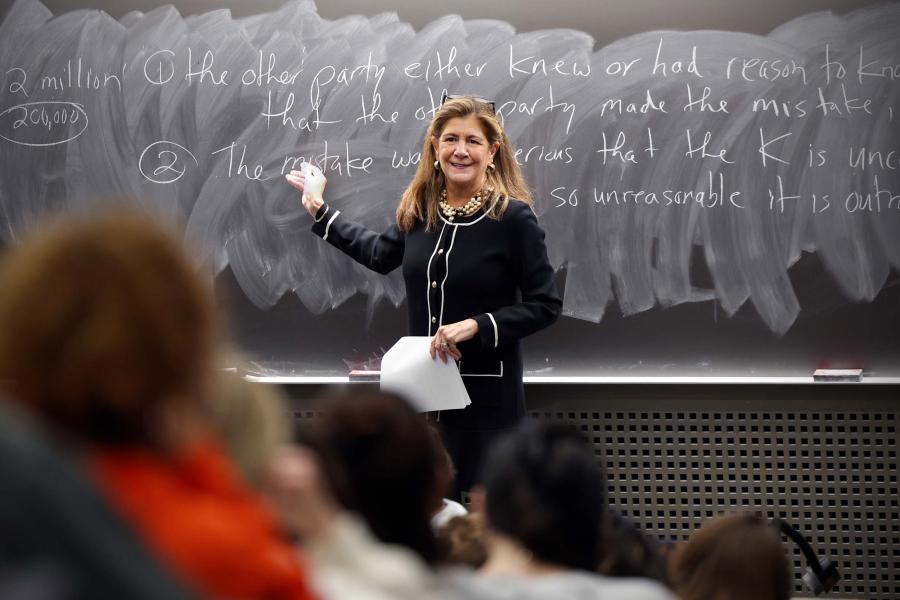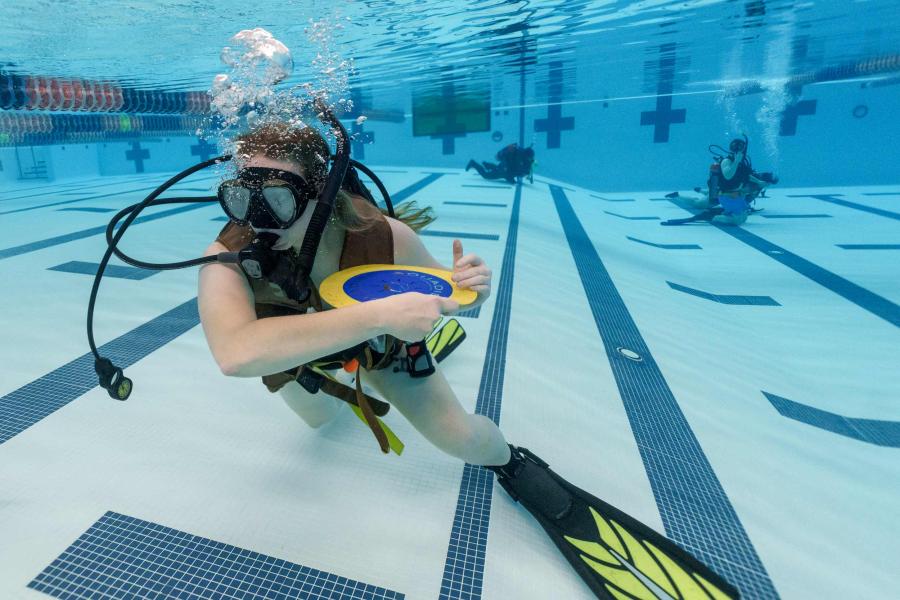Elissa Hoyt always thought that being a labor and delivery nurse would be too much for her.
“I thought, ‘Oh my gosh, I could never be a labor nurse. That’s just so much yelling and screaming,’” the third-year University of Virginia School of Nursing student said.
Then Hoyt set foot on the labor and delivery unit at UVA Health.
“It crept up on me. I didn’t think I would be able to do this, but I absolutely adore everything about this,” she said.
Hoyt is among a group of UVA nursing students who wake up before sunrise on Friday mornings and throw on their cushiest pairs of sneakers for an eight-hour shift helping families welcome their new children.
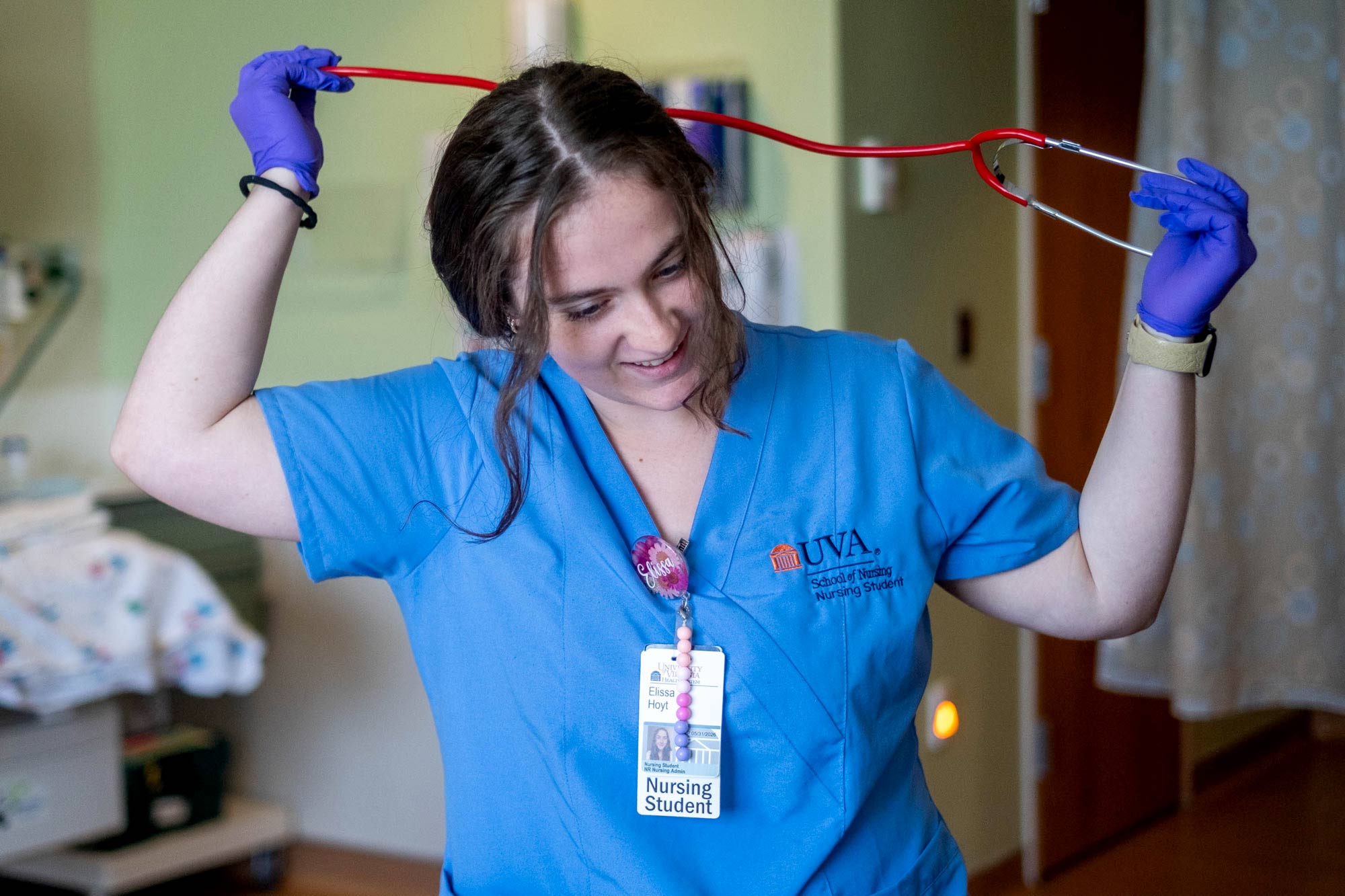
Hoyt and many of her fellow nursing students observe both vaginal and cesarean section deliveries, an increasingly rare opportunity in nursing schools. (Photo by Kelly West, University Communications)
One recent Friday at UVA Health, Hoyt and classmate Katie Jorgensen made rounds on the unit as mothers prepared to give birth. By early afternoon, Hoyt had already assisted with three transfers into the unit (when mothers have higher-risk pregnancies, they are often transferred from local hospitals to UVA Health, which can handle higher-acuity cases), completing cervical checks and monitoring a baby’s heartbeat as the mother prepared for a cesarean section.
“It’s been a lot, but not a lot at the same time,” Hoyt said. “I just love it here.”
Since they started their labor and delivery rotation at UVA Health, Hoyt and Jorgensen have been able to watch vaginal births as well as C-sections. At a time when many nursing programs are cutting back hours for students’ specialty clinical rotations, UVA nursing students can still observe both methods of delivering a baby. The student nurses also spend time on the mother-and-baby unit – separate from labor and delivery – where mothers have time to bond with their newborns.
“What helps the students the most is the number of hours and the volume that they get to see, the hours on the unit and being able to see more,” said Jennifer Kastello, an assistant professor who teaches nursing students about maternal and child health care in the classroom.
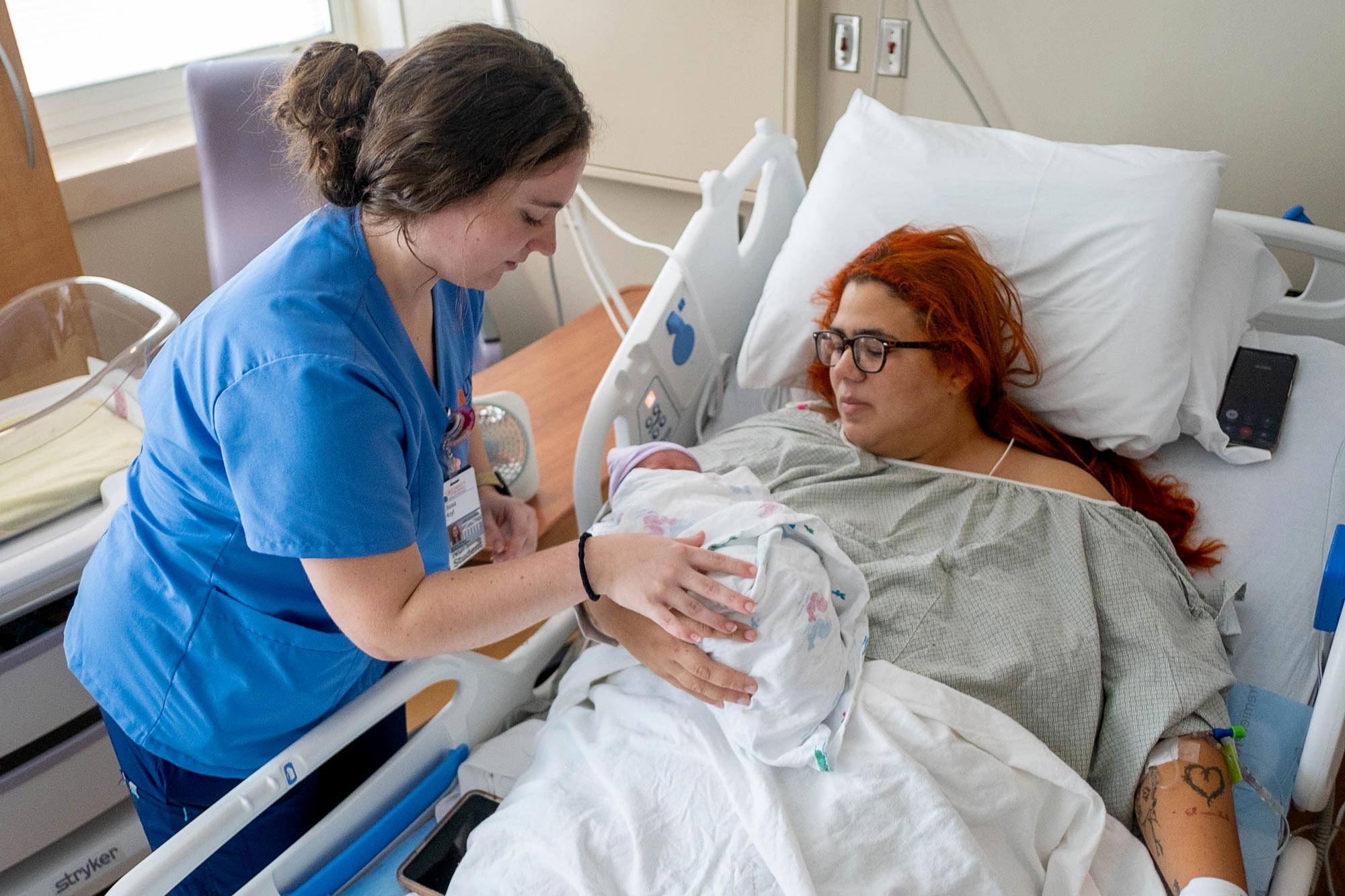
Hoyt hands Alondra Sanabria her newborn daughter, Ayla, after nurses checked Ayla’s vital signs. (Photo by Kelly West, University Communications)
“I know not all nursing students get to see those deliveries, but I’ve already had exposure to vaginal deliveries and C-sections,” Jorgensen said.
Those hours Hoyt spent with pregnant mothers and newborns convinced her she wanted to dedicate her career to this kind of care. In fact, she hopes to work at UVA Health once she has her degree.
“If I hadn’t gone to UVA, I might have never known,” Hoyt said.
Even her desire to enroll at UVA came as a surprise to Hoyt, a Louisa County native. “Nearly everyone” from her high school wanted to go to UVA or Virginia Tech, and she was determined to be different – until she visited Grounds. She submitted her application the day before it was due and was accepted.
“I kind of hated the fact that I loved it,” Hoyt said. But she realized that UVA’s School of Nursing was where she wanted to be.
Like Hoyt, Jorgensen was “hooked” on UVA after she toured, though she came to Charlottesville from Arlington, Massachusetts. She decided to become a nurse after helping her father care for her grandmother in hospice during the pandemic. The only question was where she would study nursing.
Jorgensen plans a career either as a nurse scientist or as an obstetrics and gynecology nurse, two interests UVA introduced her to.
